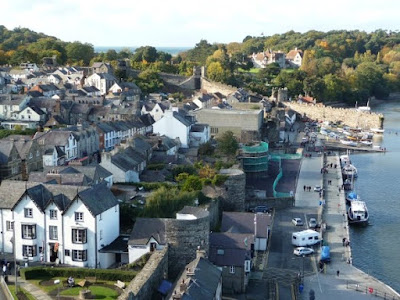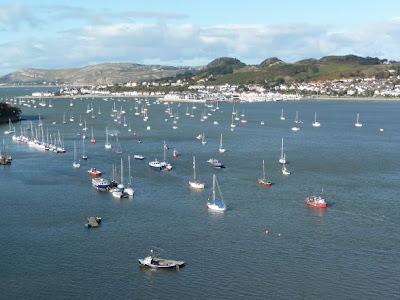The best real medieval castles, some say, are all in Wales, ordered in the later 13th century by Edward I, whom we last saw getting defeated by Robert the Bruce at Bannockburn near Stirling, in Scotland. Edward did much better in Wales, though he had to fight two wars and did not get a Stone of Scone as a bonus. (But he did get the Prince of Wales thing, which turned out to be important.) The Welsh strongholds were all in mountainous Snowdonia, in the north. Edward and his advisors concluded that it would be cheaper to build these monster castles and the fortified towns associated with them, and to send in English settlers, than to continue a series of wars with the feisty Welsh. History always has its little surprises, but, basically, he was right, and up went the castles, 17 in all, the largest and strongest of which ring Snowdonia. Edward had traveled widely before becoming king, including a crusade or two, knew the latest in warfare, and employed the leading military architect of his time. They were military fortresses, strongholds, part of the national defense, neither noble nor royal residences. They were designed to be defended by as few as a couple dozen men. And did. Anyhow, several of the castles are still in reasonably good shape. Conwy is one of the best, although not "concentric" in design, it still had its "killing fields," fortified access to the harbor, etc.
 |
Conwy Castle |
 |
"Will you go and tell your master that Arthur from the Court of Camelot is here?" |
 |
Towers and turrets |
 |
The (still-) walled town of Conwy, looking toward the fortified quay |
 |
Conwy harbor |
 |
Tower coffee house |
 |
Oldest house in Conwy, c. 1300, a National Trust property |
 |
Oldest dining room in Conwy |
 |
Smallest house in UK, they said; hey, Vicki and I live in something smaller than that... |
 |
The mussel monument, outside the Mussel Museum (alas, closed for the season) |












































